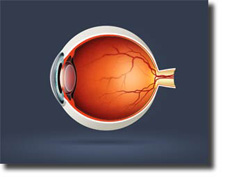Secondary Cataract

Facts About Secondary Cataract Treatment
The vision problem, secondary cataract is also known as Fuchs' dystrophy and is caused by corneal deposits. This is a disease that progresses slowly, and will often affect both eyes at the same time. Secondary cataract occurs with both women and men, though women tend to be afflicted at a higher rate than men. It is a serious eye disease that can lead to severe pain, and blindness in its advanced stages.
When someone has Fuchs’ dystrophy, their vision probably won’t be affected until they have reached their 50s or 60s, but the disease can actually be detected when someone is in their 30s.
When someone has secondary cataract disease, the swelling of the epithelial damages vision by distorting cornea's normal curvature. In addition, tiny blisters may appear on the cornea’s surface causing further visions problems.
Fuchs’ dystrophy affects the thin layer of cells that makes up the inner side of the cornea. Because these are the cells that help to pump liquid out of the cornea, when these cells begin to die, there will be a build up of liquid that leads to swelling of the cornea and clouding of vision.
The cause of Fuchs' dystrophy is not known, but what is known is that it can be inherited. If a parent has this disease, their child has about a 50 percent chance of developing it as well.
The symptoms of secondary cataract disease vary with each individual so the best way to find out if you have this type of vision problem is to see your doctor. Although the symptoms will vary, there are some common symptoms that you can look for, including blurred vision, or vision problems that tend to improve during the daylight hours. Some people also report eye pain, as well as seeing colored halos when looking at lights.
An eye examination can often diagnose secondary cataract disease. The doctor will use a low powered microscope and light to look at the eye. An optometrist should be able to detect if there are any signs of Fuchs' dystrophy with this type of examination.
When seeking medical advice about visions problems it is important to understand that it isn’t at all uncommon for secondary cataract disease to be misdiagnosed. This can be the result of a doctor’s error, or an error in lab testing. To be sure that your diagnosis is correct it is always a good idea to seek a second opinion before you begin treatment.
Fortunately, there are several ways in which this disease can be treated; they include eye drops, soft contacts or the use of surgery to cover sores that have developed on the surface of the cornea. Although these treatments will help ease some of the discomfort associated with this disease, it will not cure it.
At this time, the only way to cure secondary cataract disease is with a corneal transplant. This procedure may involve the entire cornea, but if there is donor tissue it may only require that the inner tissue of the cornea be replaced. This is the better option, as it will not require stitches and healing will be much faster. When possible, most people choose to replace the tissue.
Because this can be such a serious disease leading to major vision problem and even blindness, it is very important that you be diagnosed as soon as possible. Even if you are only in your 30s, you should contact your eye doctor if you have any of the symptoms that are associated with secondary cataract disease. A simple eye exam now can help to save you a lot of problems in the future.